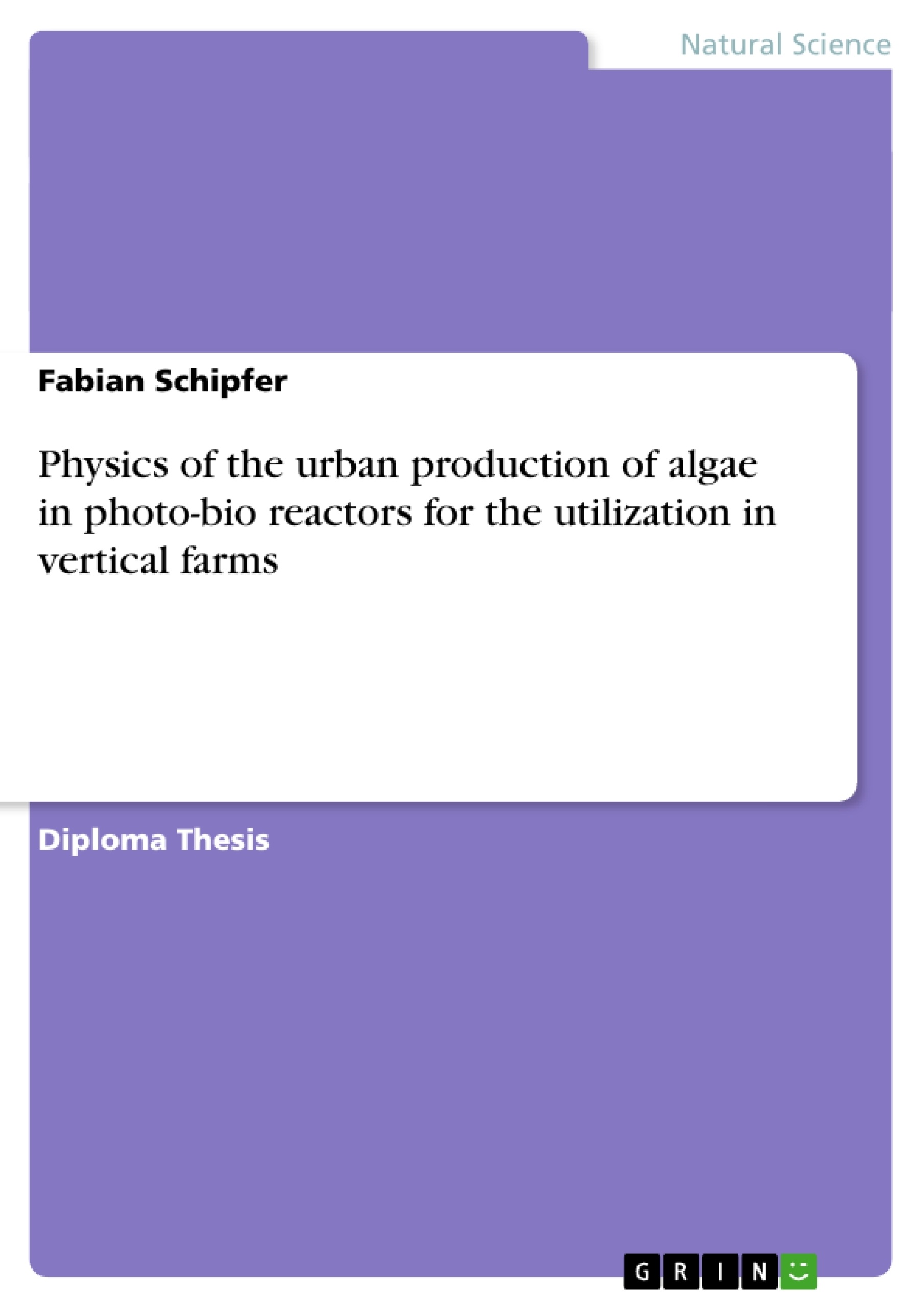Todays agricultural food production highly depends on the availability of non-renewable resources like crude oil, natural gas and phosphor rocks. Tomorrow's food security can only be ensured by reducing this dependency. There are open questions concerning the methods that can be used for the production of renewable sources in order to achieve this goal.
Is it technically and economically feasible, for instance, to produce micro-algal fertilizer in photo-bio reactors to recycle N and P from waste water streams? Is this furthermore possible by avoiding the combustion of non-renewable energies to become energy self-sucient?
Relevant examples from literature will be used to investigate the microalgal potential to extract nutrients from urban waste water streams for the re-injection into the food chain of the population. The production of algae and heat will be described in a bio-physical way to calculate the mass- and
energy flux in photo-bio reactors, attached to walls of buildings in Vienna. It will be suggested to decompose the generated bio material through anaerobic digestion to increase the N- and P share on one hand and to produce methane as an energy carrier on the other hand. The calculation model will
be used to estimate the costs of producing a micro-algal fertilizer in Vienna.
Furthermore a possible utilization of the generated fertilizer in vertical farms
will be discussed.
About 271t micro algae per year could be produced on a 100m*100m wall in
Vienna. The combustion of the produced biogas could meet the entire heat and electrical-energy demand of the production process.
By demonstrating the technical feasibility of every single part of the energy self-sucient production
chain, the technical feasibility of the whole concept is ensured.
The costs of this product, however, would be nine times higher than the costs
of commercial fertilizer. The bio-re
nery in question still has a great potential when it comes to saving a high amount of non-renewable resources, thus making it an attractive alternative to the exclusive use of biomaterial as an energy carrier. This can be further shown by comparing the sunlight irradiation on a photo-bio reactor with the calori
c value of the produced micro algae: This calculation yields an energy conversion efficiency of about 4% which could be surpassed by the electricity production of every available photovoltaic system.
Inhaltsverzeichnis (Table of Contents)
- Introduction
- Brief history of fertilizer utilization
- Resources used in today's agriculture
- Concept for the urban food supply chain of tomorrow
- Ecological Stoichiometry
- About the Utilization of Light
- Photosynthesis by algae
- Total sunlight irradiance
- Reflections on the reactor surface
- Absorption in algal culture
- Photosynthetically active radiation
- Solar conversion efficiency
- Biomass yield
- Calculations-Summary
- Nutrients
- Carbon dioxide
- Recycling nutrients from waste water treatment plants
- Temperature
- Photosynthetically non active radiation and inhibition
- Photosynthetic inefficiency
- Total heat produced
- Ensuring culture temperature for maximum yield
- Calculations-Summary
- Getting Energy Self-sufficient, A Harvesting Method
- Raising algal density
- Biogas as a joint product
- Final treatment
- Net energy of the harvesting process
- Estimating Algal Fertilizer Production in Vienna
- Total net energy
- Costs, fertilizer value and other benefits
- Conclusions
- Sensitivity analysis
- Food for thought
Zielsetzung und Themenschwerpunkte (Objectives and Key Themes)
This diploma thesis investigates the potential of using algae cultivated in photo-bioreactors for fertilizer production in vertical farms. The goal is to analyze the physical processes involved, evaluate the feasibility of this approach, and assess its potential contribution to urban food production. Key themes explored in this work include:- Urban agriculture and sustainable food systems
- The use of algae as a resource for fertilizer production
- The role of photo-bioreactors in optimizing algal growth and production
- Energy efficiency and resource optimization in urban agriculture
- The potential of algal cultivation for a more sustainable food system
Zusammenfassung der Kapitel (Chapter Summaries)
This chapter introduces the concept of utilizing algae for fertilizer production in vertical farms, placing it within the context of the historical development of fertilizer usage and contemporary resource constraints in agriculture. It outlines the potential benefits of this approach for creating a sustainable and efficient food system. This chapter explores the principles of ecological stoichiometry, a framework for understanding the balance of nutrients in ecosystems. It investigates the relevance of this concept to algal cultivation and its potential impact on the efficiency of fertilizer production. This chapter focuses on the utilization of light in algal photosynthesis. It examines factors such as total sunlight irradiance, reflections on the reactor surface, absorption by the algal culture, photosynthetically active radiation, solar conversion efficiency, biomass yield, and overall energy considerations. This chapter explores the role of nutrients, specifically carbon dioxide and the potential for recycling nutrients from wastewater treatment plants, in algal growth and production. This chapter examines the impact of temperature on algal photosynthesis, including the effects of non-active radiation, photosynthetic inefficiency, heat production, and the need to maintain optimal culture temperature for maximum yield. This chapter investigates various harvesting methods for algal biomass, focusing on the potential for energy self-sufficiency. It explores the processes of raising algal density, biogas production, final treatment, and overall net energy calculations. This chapter presents an estimation of algal fertilizer production in Vienna, considering factors such as total net energy, costs, fertilizer value, and other potential benefits. This chapter presents the conclusions drawn from the study, including a sensitivity analysis of key factors and a discussion of areas for further research and development.Schlüsselwörter (Keywords)
This diploma thesis focuses on the intersection of urban agriculture, sustainable food production, and algae-based fertilizer production. Key themes and concepts include: photo-bioreactors, vertical farming, ecological stoichiometry, photosynthesis, light utilization, nutrients, temperature, biomass yield, energy efficiency, and sustainable agriculture.- Quote paper
- Fabian Schipfer (Author), 2012, Physics of the urban production of algae in photo-bio reactors for the utilization in vertical farms, Munich, GRIN Verlag, https://www.grin.com/document/205051



